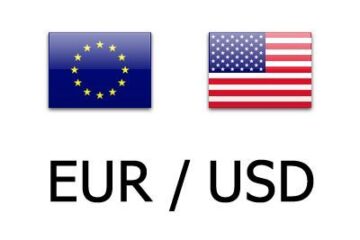Global investors are growing increasing cautious on stocks, and U.S. equities in particular, as concern about the Trump administration’s trade war weighs on risk sentiment heading into the summer and beyond.
Bank of America’s closely tracked Flow Show report, published Friday, suggests there’s been “little evidence” that investors are dumping U.S. assets in the wake of President Donald Trump’s Liberation Day tariff reveal on April 2. But the study notes an uptick in demand for international stocks, with European names at the top of the list, amid the trade war uncertainty.
💸💰Don’t miss the move: Subscribe to TheStreet’s free daily newsletter 💰💸
Capital flows are directly related to trade, and while the ratio isn’t perfectly symmetrical, the economic evidence is overwhelming that trade deficits are offset by incoming cash, which is used to buy stocks, bonds and a host of other assets.
That’s powered U.S. markets for the past five decades, given that the U.S. last ran an overall trade surplus in 1975, with notably outsized gains since the start of the new century.
The value of U.S. stocks has more than tripled since the start of the new century, far outpacing gains seen in Europe and other markets around the world.
The collective market value of the S&P 500 at the end of 1999 was around $12.3 trillion, about double the value of Europe’s Stoxx 600 just as the region’s common currency was being introduced.
Today, the S&P 500 market cap hovers around $47.5 trillion, more than 3.3 times the European benchmark.
Bank of America’s report in fact notes that while the U.S. trade deficit hit a record $140 billion in March — likely as a result of importers frontrunning U.S. tariffs — foreign capital flows topped $540 billion over the past five years.
US stocks might see ‘structural bear market’: B of A
But the money is starting to slow, with investors pulling $24.8 billion from U.S. stocks over the past four weeks, the biggest outflow in two years, while directing around $7 billion to international stocks.
Related: Key driver of U.S. stocks powers through tariff uncertainty
“Global capital is no longer exclusively chasing US assets, and just a small reallocation of US stocks, from 64% of global equity market cap to, say, 60%, the average of [the] 2020s, would have a big positive impact on ‘rest-of-world’ assets,” the report said.
That could leave U.S. stocks in a “structural bear market relative to international stocks” as government spending slows, tariffs act like a tax hike on American citizens, and the Federal Reserve keeps its baseline interest rate unchanged amid renewed inflation risks, according to the Bank of America report.
That said, the S&P 500 is less than 8% away from the all-time closing peak of 6,144 it reached on Feb. 19 and is essentially flat with the level it traded at prior to Trump’s tariff unveiling on April 2.
First-quarter earnings also impressed, rising nearly 13% from a year earlier to around $533 billion, a $12 billion improvement from the start of the reporting season.
However, international stocks have outperformed their U.S. peers by 16% over the past four months, the largest gap on record.
International stocks have outperformed US stocks by 16% over the past 4 months, the biggest 4-month outperformance on record.
Video: https://t.co/fZCxaJmvjx pic.twitter.com/RMouY0HxS4
— Charlie Bilello (@charliebilello) May 8, 2025
Fund manager: Tariff rethink in Trump administration
Emily Bowersock-Hill, founding partner and CEO at Bowersock Capital Partners, says the recent market selloff likely prompted a tariff rethink from the Trump administration, with investors now looking for a “continued retreat from the economically damaging trade policy.”
“The U.S. stock market is currently not pricing in a recession or even a meaningful slowdown,” Bowersock-Hill said. “Investors appear to be expecting the 90-day tariff pause to become an off-ramp for the Trump administration, allowing it time to slowly soften its aggressive trade policy without appearing to backtrack.”
More Economic Analysis:
Fed inflation gauge sets up stagflation risks as tariff policies biteU.S. recession risk leaps as GDP shrinksLike it or not, the bond market rules all
“For investors who felt extremely uncomfortable in the first week of April, now would be a reasonable time to reconsider exposure to U.S. stocks and rebalance to long-term targets,” she added.
Ken Mahoney, CEO of Mahoney Asset Management, is also optimistic on U.S. stocks, but he notes that since the S&P booked back-to-years years of 20% gains, a major move higher could be challenging.
“The market has done a good job at climbing the wall of worry and sniffed out Trump laying off the ‘burn it down’ and haphazard approach to tariffs,” he said.
“If we get a better deal with China and a more clear/stable picture, the market rally can really continue to expand and surprise everyone, including ourselves.”


